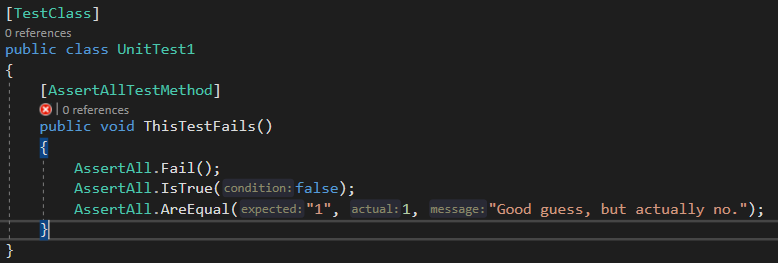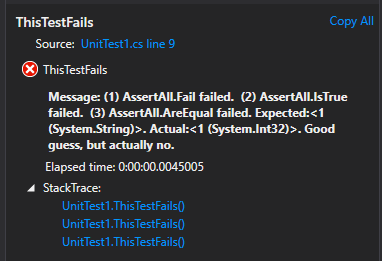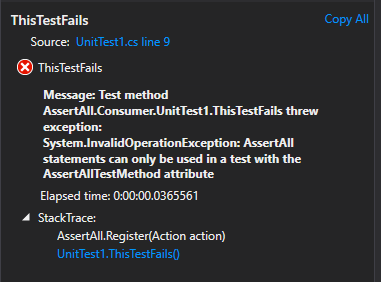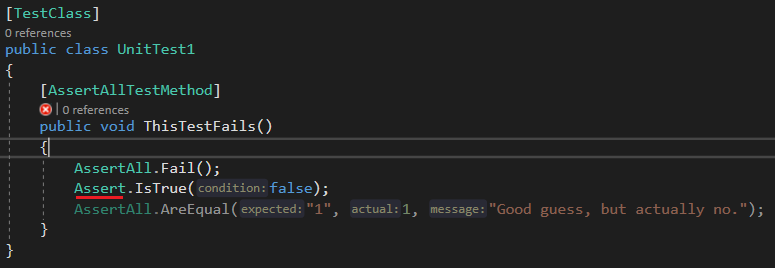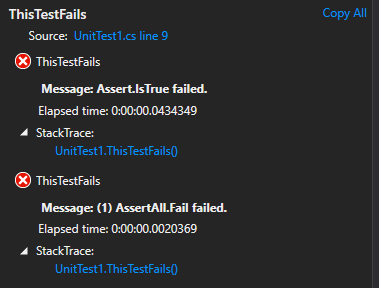Run all of your MSTest assert statements and have each failure message reported summarily.
- .NETStandard 2.0
- MSTest.TestFramework >= 1.4.0
Use the AssertAllTestMethod attribute in order to use AssertAll methods. In your test, use AssertAll instead of Assert.
After the test runs, each assert statement that fails will be displayed in the Visual Studio test explorer result pane, and each failed AssertAll message is displayed summarily.
AssertAll statements can't be used unless the AssertAllTestMethod attribute is used; using the TestMethod attribute will result in an InvalidOperationException being thrown.
If you mix Assert and AssertAll statements, then your AssertAll statements will be executed up until one of your Assert statements fails.
If both Assert and AssertAll statements fail, Visual Studio will display two results.
Similar to the Assert class, AssertAll contains a singleton instance called "That" which allows you to write extension methods.
Use the AssertAll.Collections static property to assert against collections of objects. AssertAll.Collections also contains a singleton instance called "That" which allows you to write extension methods.
Use the AssertAll.Strings static property to assert against two strings. AssertAll.Strings also contains a singleton instance called "That" which allows you to write extension methods.
AssertAll methods must necessarily not return any object; thus, to test an exception for an inner exception, use AssertAll.ExceptionHasInnerException. Similarly, to test that an exception message is equal to or contains a given string, use AssertAll.ExceptionMessageEquals and AssertAll.ExceptionMessageContains, respectively.
